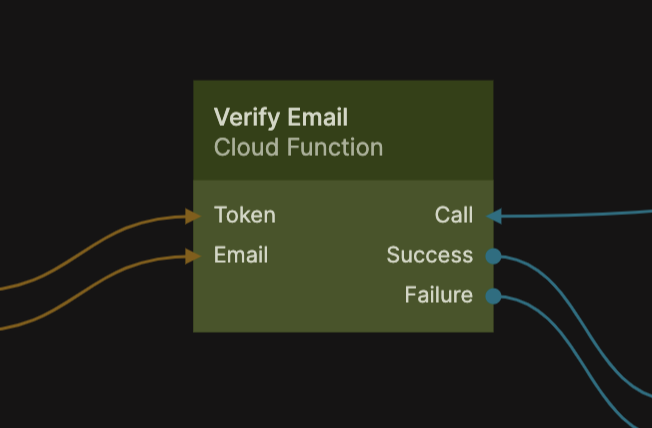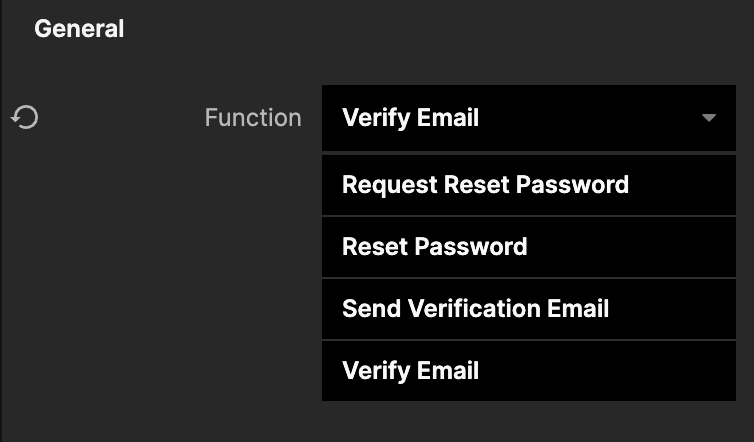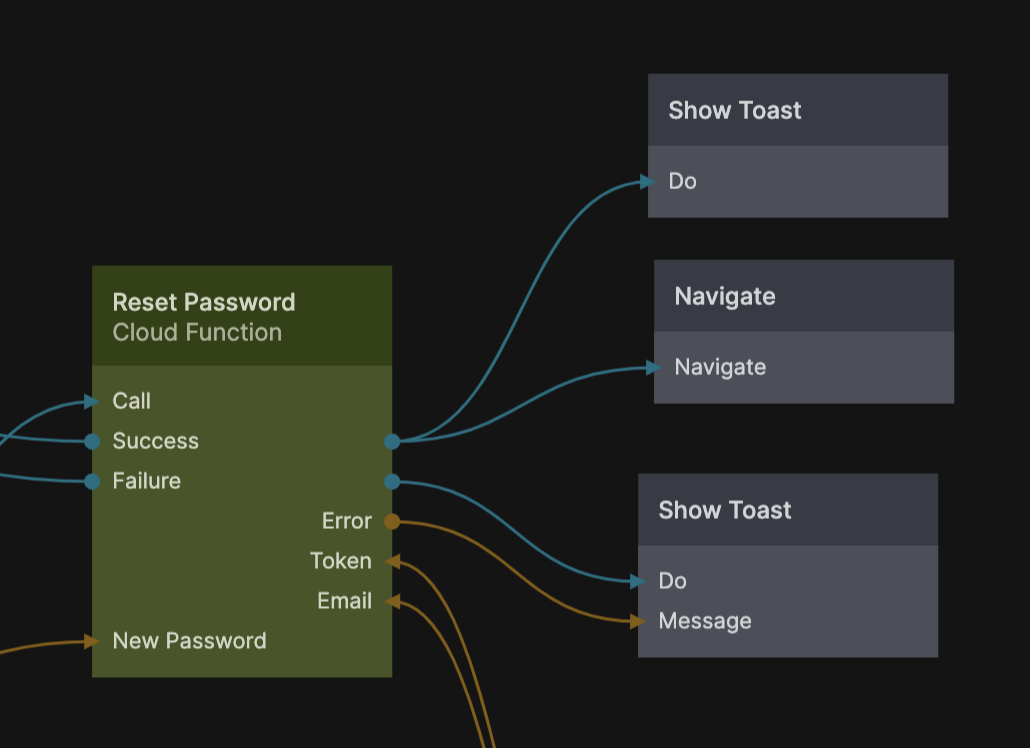Cloud Function
Cloud functions are logic components that run in the cloud and not on the client like other logic components. The Cloud Function node is how you initiate a call to a cloud function component. Learn more about how to use cloud functions in this guide.

You will first need to pick the cloud function that you want to call with this node.

After you have picked the cloud function, the Cloud Function node will receive the input parameters and output result parameters defined in the cloud function so you can hook them up to the logic of your application.
A cloud function can either return a Success or Failure response, this will result in the corresponding output signal on the Cloud Function node. You can use this to trigger different flows in your logic.

If a Failure signal is emitted you can also use the Error output that will contain the error message sent from the cloud function.
If a Success signal is sent the result parameters will be available as outputs on the Cloud Function node.
Inputs
| Data | Description |
|---|---|
| Function | The cloud function component that this node will call. |
Parameters
The Cloud Function node will receive all parameters specified in the Request node in the cloud function component as inputs. When the Call signal is received the values on the inputs will be sent to the cloud funciton.
| Signal | Description |
|---|---|
| Call | Send a signal on this input to issue the request to the cloud function. |
Outputs
| Data | Description |
|---|---|
| Error | If the cloud function results in an error status, this output will contain the error message. |
Result
The Cloud Function node will receive all result parameters specified in any Response node in the cloud function component that is called. When the cloud function completes and retuns a Sucess status, any result parameters sent back will be available on these outputs.
| Signal | Description |
|---|---|
| Success | This is sent if the cloud function returns a Success status. |
| Failure | This is sent if the cloud function returns a Failure status. |